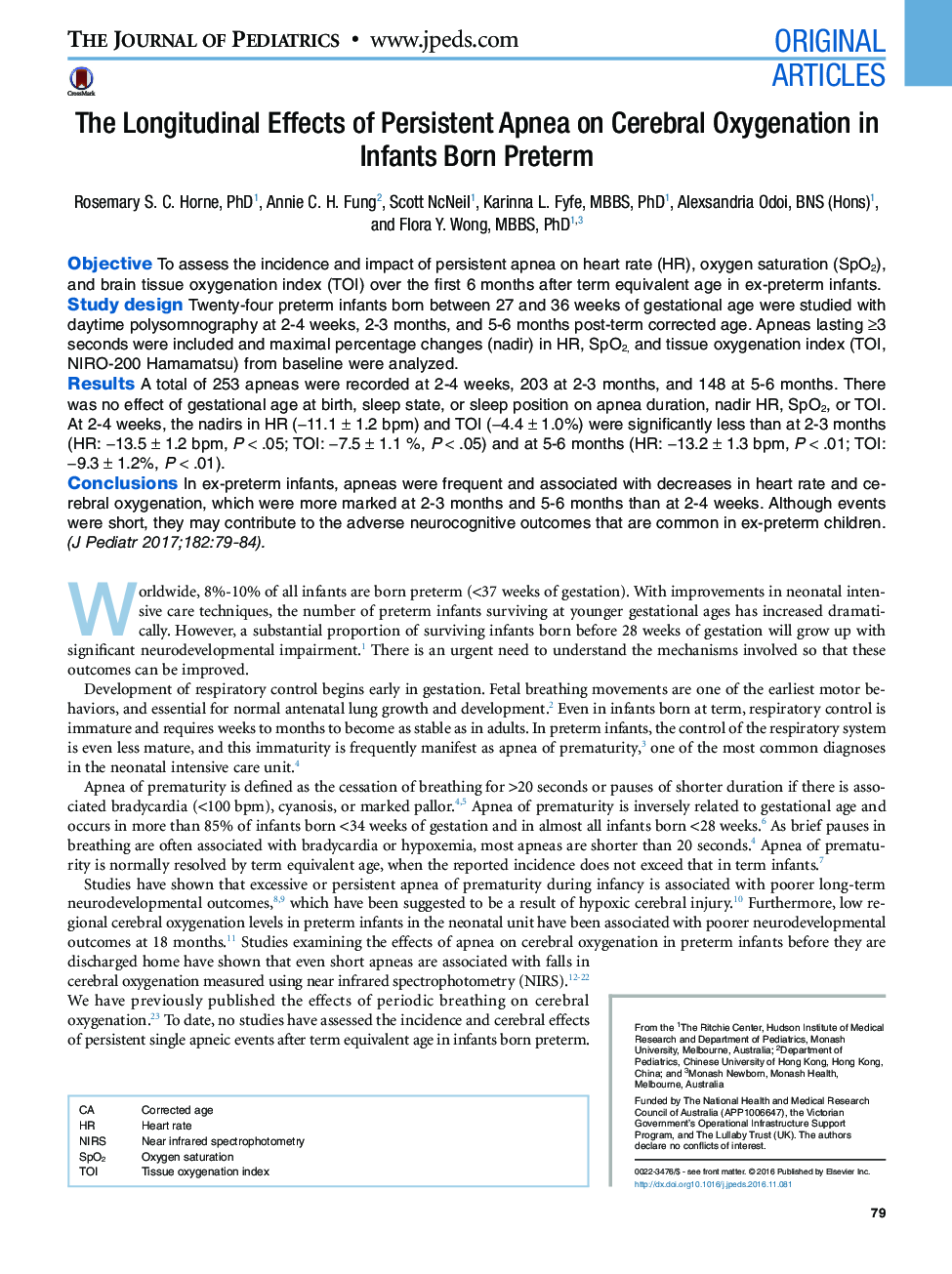| Article ID | Journal | Published Year | Pages | File Type |
|---|---|---|---|---|
| 5719656 | The Journal of Pediatrics | 2017 | 6 Pages |
ObjectiveTo assess the incidence and impact of persistent apnea on heart rate (HR), oxygen saturation (SpO2), and brain tissue oxygenation index (TOI) over the first 6 months after term equivalent age in ex-preterm infants.Study designTwenty-four preterm infants born between 27 and 36 weeks of gestational age were studied with daytime polysomnography at 2-4 weeks, 2-3 months, and 5-6 months post-term corrected age. Apneas lasting â¥3 seconds were included and maximal percentage changes (nadir) in HR, SpO2, and tissue oxygenation index (TOI, NIRO-200 Hamamatsu) from baseline were analyzed.ResultsA total of 253 apneas were recorded at 2-4 weeks, 203 at 2-3 months, and 148 at 5-6 months. There was no effect of gestational age at birth, sleep state, or sleep position on apnea duration, nadir HR, SpO2, or TOI. At 2-4 weeks, the nadirs in HR (â11.1â±â1.2âbpm) and TOI (â4.4â±â1.0%) were significantly less than at 2-3 months (HR: â13.5â±â1.2âbpm, Pâ<â.05; TOI: â7.5â±â1.1 %, Pâ<â.05) and at 5-6 months (HR: â13.2â±â1.3âbpm, Pâ<â.01; TOI: â9.3â±â1.2%, Pâ<â.01).ConclusionsIn ex-preterm infants, apneas were frequent and associated with decreases in heart rate and cerebral oxygenation, which were more marked at 2-3 months and 5-6 months than at 2-4 weeks. Although events were short, they may contribute to the adverse neurocognitive outcomes that are common in ex-preterm children.
